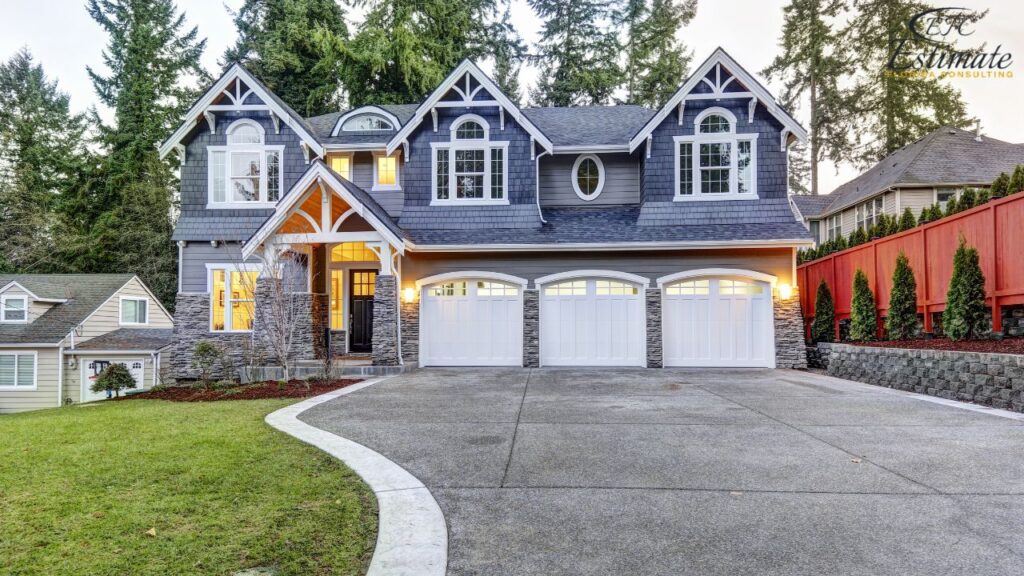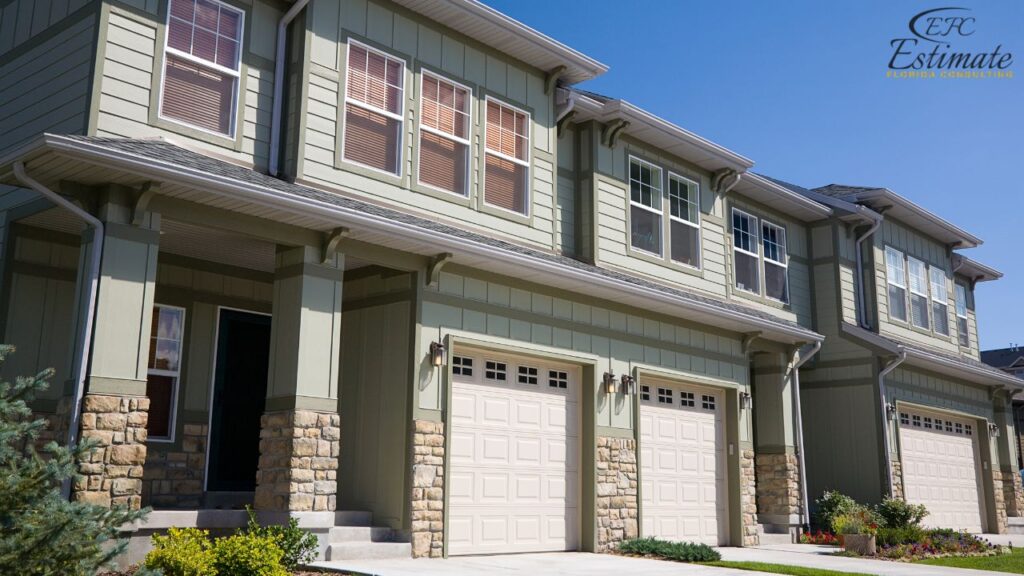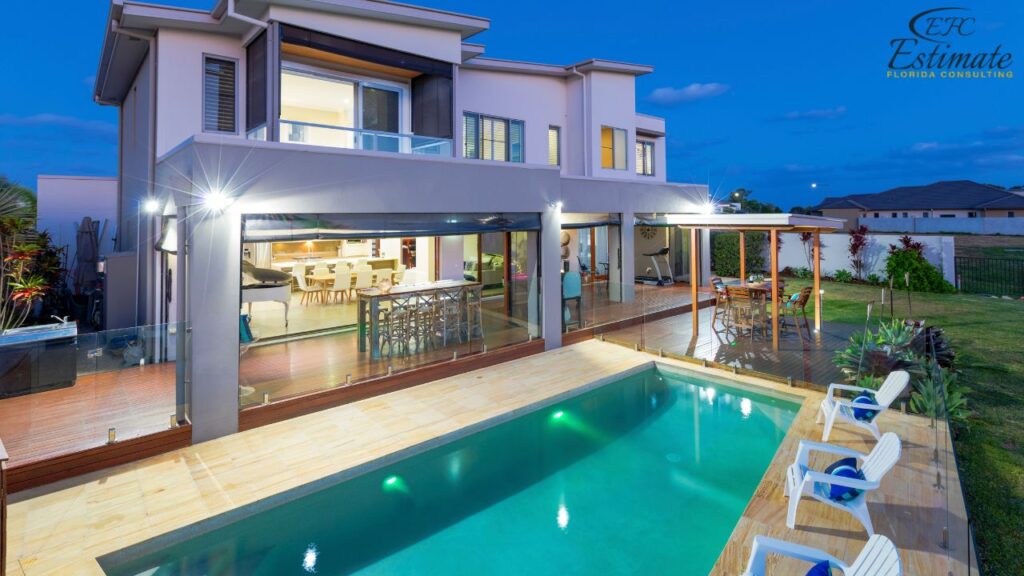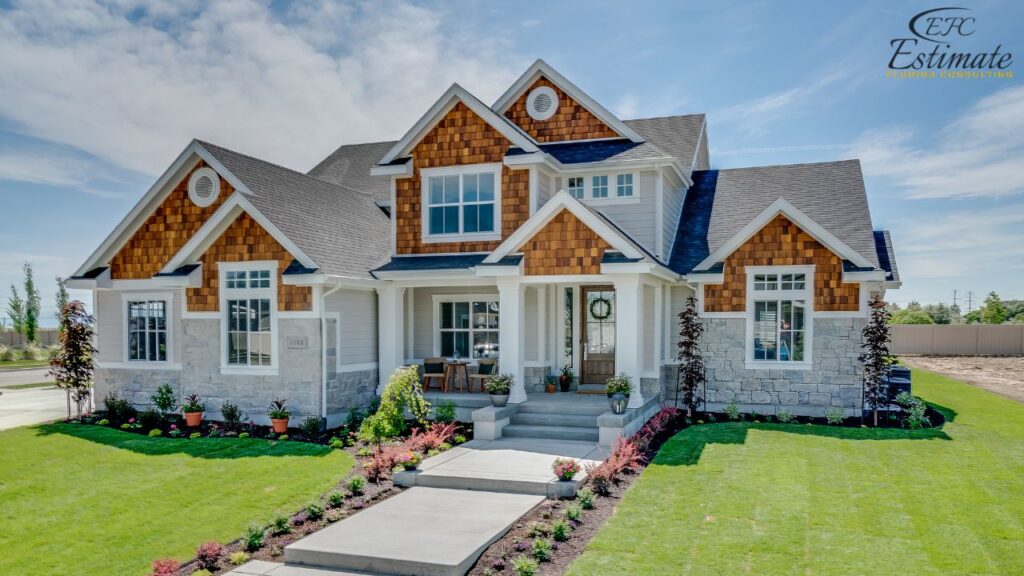How Much Does It Cost to Build a 3,000 Sq Ft House?
The average cost to build a 3,000-square-foot house ranges from $630,000 to $1,680,000. This estimate includes basic construction, materials, labor, and additional expenses. The cost per square foot typically ranges from $210 to $560, depending on the factors mentioned. Higher-end materials, intricate designs, and custom features can push the cost towards the upper end of the spectrum, while opting for more standard options can help keep the costs lower. It’s important to understand that every choice made in the construction process, from the type of wood used in framing to the quality of fixtures, will impact the final price.

Type of Construction | Estimated Cost (Total) | Estimated Cost Per Sq Ft |
Basic Construction | $630,000 – $840,000 | $210 – $280 |
Mid-Range Construction | $840,000 – $1,260,000 | $280 – $420 |
High-End Construction | $1,260,000 – $1,680,000 | $420 – $560 |
Factors Influencing the Cost of Building a House
Location
The location of the house significantly affects the overall cost. Urban areas with higher living costs and stringent building regulations tend to be more expensive. Additionally, regions prone to natural disasters may require more robust construction standards, increasing the cost. For instance, building in an area with a high risk of hurricanes may necessitate stronger materials and more complex engineering, driving up the costs considerably. Proximity to essential services, ease of access, and the desirability of the neighborhood also play crucial roles in determining the overall expense.
Materials
The choice of materials is a major determinant of cost. Basic materials are less expensive, while high-end materials like granite countertops, hardwood floors, and custom cabinetry can substantially increase the budget. For example, opting for marble flooring instead of laminate can add thousands of dollars to the total cost. Similarly, high-quality exterior siding and roofing materials can enhance durability and aesthetic appeal but come with a higher price tag. Moreover, sustainable and energy-efficient materials, while initially more costly, can result in long-term savings and benefits for the environment.
Labor
Labor costs vary based on the complexity of the project and the local labor market. Skilled labor for specialized tasks, such as electrical work and plumbing, tends to be more expensive. Hiring experienced contractors can ensure quality but may come at a higher price. It’s important to budget for both the number of labor hours required and the hourly rates, which can vary significantly between regions and contractors. Furthermore, the reliability and reputation of the labor force can significantly impact the overall quality and timeline of the construction project.

Cost Breakdown for Building a 3,000 Sq Ft House
Foundation
The foundation is a critical component of the house. The cost can vary depending on the type of foundation chosen, such as a slab, crawl space, or basement. A slab foundation is generally the least expensive, while a full basement adds significantly to the cost. Factors such as soil condition, required excavation, and local building codes can further influence foundation costs. Properly investing in the foundation ensures the structural integrity and longevity of the house.
- Estimated Cost: $21,000 – $70,000
- Factors Affecting Cost: Soil condition, type of foundation, labor. The complexity of the soil testing and preparation, along with the need for waterproofing in certain areas, can further influence costs. Additionally, the geographical location and potential seismic activity can require reinforced foundation structures, adding to the expense.
Framing
Framing forms the structural skeleton of the house. The cost includes the materials and labor required to construct the frame. The design complexity, including features like vaulted ceilings or custom architectural elements, can increase framing costs. High-quality lumber or steel frames, though more expensive, provide greater durability and resistance to pests and environmental factors.
- Estimated Cost: $42,000 – $168,000
- Factors Affecting Cost: Type of wood, design complexity, labor. Using high-quality lumber or engineered wood products can add to the overall cost but provide better durability and longevity. Additionally, incorporating advanced framing techniques can improve energy efficiency and reduce long-term heating and cooling costs.

Roofing
The roofing cost depends on the materials used and the complexity of the roof design. Asphalt shingles are more affordable, while metal or tile roofs are pricier. Roof pitch, number of valleys, and the presence of dormers or skylights also affect costs. Investing in durable roofing materials ensures protection against weather elements and reduces future maintenance expenses.
- Estimated Cost: $14,000 – $70,000
- Factors Affecting Cost: Material, roof design, labor. Durable roofing materials like slate or metal can offer long-term savings in maintenance but require a higher initial investment. Proper insulation and ventilation under the roof can also affect costs and contribute to the home’s energy efficiency.
Exterior Finishes
Exterior finishes include siding, windows, doors, and paint. These elements contribute to the house’s aesthetic appeal and insulation. High-quality windows and doors can improve energy efficiency but add to the initial cost. The choice of exterior materials not only impacts the home’s look but also its resistance to weather and temperature changes.
- Estimated Cost: $28,000 – $112,000
- Factors Affecting Cost: Material, design, labor. Choosing energy-efficient siding and windows can reduce long-term energy costs, justifying the higher upfront expense. Additionally, selecting materials that require less maintenance over time can lead to cost savings in the future.
Download Template For House Construction Project Breakdown
- Materials list updated to the zip code
- Fast delivery
- Data base of general contractors and sub-contractors
- Local estimators

Interior Finishes
Interior finishes cover flooring, paint, cabinetry, countertops, and fixtures. The choice of materials and design preferences significantly influence the cost. Custom cabinetry, premium appliances, and luxurious flooring options can substantially increase the budget. Attention to detail in interior finishes can significantly enhance the home’s comfort and resale value.
- Estimated Cost: $70,000 – $280,000
- Factors Affecting Cost: Material, design, labor. High-end finishes and custom features, such as a gourmet kitchen or spa-like bathrooms, can add significant value and comfort to the home but come at a higher cost. Opting for durable and easy-to-maintain materials can also contribute to long-term cost savings.
Plumbing and Electrical
Plumbing and electrical systems are essential for functionality. Costs vary based on the complexity and quality of the systems installed. Adding features like a central vacuum system or advanced home automation can increase costs. Ensuring these systems are up-to-date and efficient is crucial for the home’s safety and energy efficiency.
- Estimated Cost: $28,000 – $84,000
- Factors Affecting Cost: System complexity, quality, labor. High-efficiency fixtures and modern electrical systems with ample capacity for future upgrades can provide long-term benefits but require a higher initial investment. Incorporating smart home technology can enhance convenience and future-proof the home.
HVAC
Heating, ventilation, and air conditioning (HVAC) systems ensure a comfortable living environment. The cost depends on the system’s efficiency and the house’s size. Zoned heating and cooling systems, which offer more control over individual areas, can add to the cost. Investing in a high-efficiency HVAC system can reduce energy costs and improve indoor air quality.
- Estimated Cost: $14,000 – $42,000
- Factors Affecting Cost: System efficiency, house size, labor. Investing in a high-efficiency HVAC system can reduce energy costs over time and improve indoor air quality. Proper installation and maintenance of the HVAC system are essential to ensure optimal performance and longevity.
HVAC
Heating, ventilation, and air conditioning (HVAC) systems ensure a comfortable living environment. The cost depends on the system’s efficiency and the house’s size. Zoned heating and cooling systems, which offer more control over individual areas, can add to the cost. Investing in a high-efficiency HVAC system can reduce energy costs and improve indoor air quality.
- Estimated Cost: $14,000 – $42,000
- Factors Affecting Cost: System efficiency, house size, labor. Investing in a high-efficiency HVAC system can reduce energy costs over time and improve indoor air quality. Proper installation and maintenance of the HVAC system are essential to ensure optimal performance and longevity.
Additional Costs
Permits and Inspections
Building permits and inspections are necessary to ensure compliance with local building codes and regulations. These costs can vary based on the complexity of the project and local government fees. Properly budgeting for permits and inspections helps avoid potential legal issues and ensures the construction meets all safety standards.
- Estimated Cost: $7,000 – $21,000
Landscaping

Landscaping enhances the house’s exterior appeal. Costs vary based on the scope of the project and the types of plants and features chosen. Hardscaping elements like patios, walkways, and retaining walls can significantly add to the cost. A well-designed landscape not only improves curb appeal but can also provide functional outdoor living spaces.
- Estimated Cost: $7,000 – $28,000
Contingency
It’s wise to set aside a contingency budget for unexpected expenses that may arise during construction. This helps cover any unanticipated costs without derailing the project budget. Having a contingency fund ensures that the project can proceed smoothly even if unexpected issues occur.
- Recommended Budget: 10% – 20% of the total project cost
Average Cost to Build a House by Location
The cost of building a house can vary significantly by location. Areas with higher living costs, such as major cities, tend to have higher construction costs. Additionally, regions with harsh weather conditions may require more durable materials and construction methods, increasing the overall cost. For example, building in a coastal area prone to hurricanes may necessitate more expensive, storm-resistant materials and construction techniques. Proximity to urban centers, availability of local materials, and accessibility of skilled labor also influence regional cost variations.
Floor Replacement Cost by Material
The type of material chosen for flooring can impact the overall construction cost. Basic materials like carpet or vinyl are generally more affordable, while high-end options like hardwood or natural stone are more expensive. The choice of flooring not only affects the aesthetic appeal of the house but also its durability and maintenance requirements. High-quality flooring materials can enhance the home’s value and provide long-term cost savings through reduced maintenance and longer lifespan.
Material | Average Cost (Per Sq Ft) | Estimated Cost for 3,000 Sq Ft |
Carpet | $3 – $12 | $9,000 – $36,000 |
Vinyl | $5 – $15 | $15,000 – $45,000 |
Laminate | $6 – $20 | $18,000 – $60,000 |
Hardwood | $8 – $27 | $24,000 – $81,000 |
Tile | $9 – $30 | $27,000 – $90,000 |
Get 5 New Leads Next 7 Days With Our System
- Multi-Family House
- Single-Faimly House
- Modern House
- Duplex
- Ranch House
- Bungalow
Cost-Saving Tips
- Choose Standard Designs: Custom designs and unique architectural features can significantly increase costs. Opting for standard designs can help keep the budget in check. However, it’s important to balance cost savings with the desired functionality and aesthetic appeal of the home.
- Source Local Materials: Using locally sourced materials can reduce transportation costs and support local businesses. Additionally, locally available materials are often better suited to the regional climate and environmental conditions.
- Plan for Energy Efficiency: Investing in energy-efficient systems and materials can reduce long-term operating costs. This includes high-efficiency HVAC systems, insulation, windows, and appliances. Though the initial investment may be higher, the long-term savings on energy bills can be substantial.
- DIY Where Possible: Homeowners with the skills and time can save on labor costs by doing some of the work themselves. However, it’s crucial to understand the scope of the work and ensure it is done to code to avoid future issues. Tasks like painting, landscaping, or installing fixtures are often manageable for DIY enthusiasts.
- Hire a Reputable Contractor: A reputable contractor can provide accurate estimates and help avoid costly mistakes. Proper vetting of contractors, including checking references and reviewing past projects, is essential to ensure quality and reliability.
Conclusion
Building a 3,000 square foot house is a significant investment that requires careful planning and consideration of various factors. Understanding the average costs, factors influencing these costs, and ways to manage the budget can help in achieving a successful project. By making informed decisions and working with experienced professionals, homeowners can build their dream home while staying within budget. Proper planning and attention to detail throughout the construction process can ensure the final result is a well-constructed, functional, and beautiful home.
FAQs
The average cost to build a 3,000 sq ft house ranges from $630,000 to $1,680,000. This includes basic construction, materials, labor, and additional expenses. The cost per square foot typically ranges from $210 to $560.
Several factors influence the cost, including:
- Location: Urban areas and regions prone to natural disasters tend to have higher costs.
- Materials: Basic materials are less expensive, while high-end materials can increase the budget.
- Labor: Costs vary based on the complexity of the project and local labor market rates.
- Design Complexity: Custom features and intricate designs add to the cost.
Building in urban areas or regions with higher living costs tends to be more expensive due to stricter building regulations and higher labor rates. Areas prone to natural disasters may require more robust construction, increasing costs.
- Basic Construction: $630,000 – $840,000 ($210 – $280 per sq ft)
- Mid-Range Construction: $840,000 – $1,260,000 ($280 – $420 per sq ft)
- High-End Construction: $1,260,000 – $1,680,000 ($420 – $560 per sq ft)
- Foundation: $21,000 – $70,000
- Framing: $42,000 – $168,000
- Roofing: $14,000 – $70,000
- Exterior Finishes: $28,000 – $112,000
- Interior Finishes: $70,000 – $280,000
- Plumbing and Electrical: $28,000 – $84,000
- HVAC: $14,000 – $42,000
Higher-end materials like granite countertops and hardwood floors can substantially increase costs. Opting for basic materials can help keep the budget lower, while sustainable and energy-efficient materials, though more costly initially, can lead to long-term savings.
- Permits and Inspections: $7,000 – $21,000
- Landscaping: $7,000 – $28,000
- Contingency: 10% – 20% of the total project cost
- Choose Standard Designs: Custom designs can significantly increase costs.
- Source Local Materials: Reduces transportation costs and supports local businesses.
- Plan for Energy Efficiency: Invest in high-efficiency systems and materials for long-term savings.
- DIY Where Possible: Save on labor costs by doing some tasks yourself.
- Hire a Reputable Contractor: Ensure quality and avoid costly mistakes.
Labor costs depend on the project’s complexity and local labor market rates. Skilled labor for specialized tasks like electrical work and plumbing is more expensive, but hiring experienced contractors can ensure quality.
More complex designs with features like vaulted ceilings or custom architectural elements increase framing and overall construction costs. High-quality lumber or steel frames, though more expensive, provide greater durability.
A contingency budget helps cover unexpected expenses without derailing the project. Setting aside 10% – 20% of the total project cost ensures the project can proceed smoothly even if unforeseen issues arise.
Google Reviews



Process To Get House Cost Estimate Report
Here I am going to share some steps to get house cost estimate report.
-
You need to send your plan to us.
You can send us your plan on info@estimatorflorida.com
-
You receive a quote for your project.
Before starting your project, we send you a quote for your service. That quote will have detailed information about your project. Here you will get information about the size, difficulty, complexity and bid date when determining pricing.
-
Get Estimate Report
Our team will takeoff and estimate your project. When we deliver you’ll receive a PDF and an Excel file of your estimate. We can also offer construction lead generation services for the jobs you’d like to pursue further.

